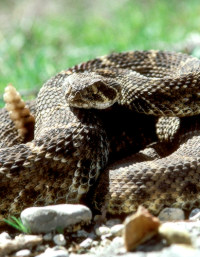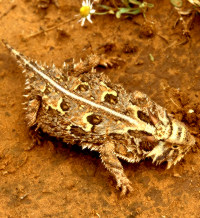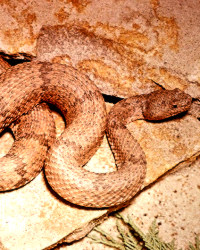Reptiles (many species)
Snakes, lizards, frogs, and turtles were all regular dinner items for the prehistoric peoples of the region. Among the reptiles bones recovered from Hinds Cave are the following species: spiney soft shell turtle (Trionyx spiniferus), Texas spiny lizard (Sceloporus olivaceous), Texas horned lizard (Phrynosoma cornutum), Texas alligator lizard (Garrhonotus liocephalus), western diamondback (Crotalis atrox), mottled rock rattler (Crotalis lepidus), and the Rio Grande leopard frog (Rana berlandieri). Many other reptile species have been identified at archeological sites elsewhere in the region.
Many reptiles are even easier to capture than rodents, being cold-blooded and characteristically slower. Turtles, for instance, spend many days out of the water sunning themselves on rocks. At Hinds Cave, lizards were sometimes eaten whole: skin, bones, and all. Other small reptiles were probably also eaten with minimal preparation. Grab it and gulp. Terrestrial and water turtles were also valued for their shells. At Kincaid rock shelter in Uvalde County, the plastron (undershell) of a turtle was found in early Paleoindian levels. Turtle shells were used as containers and as musical instruments.
![]()


